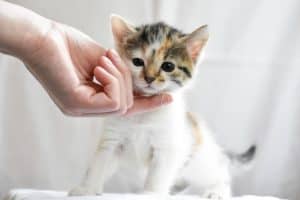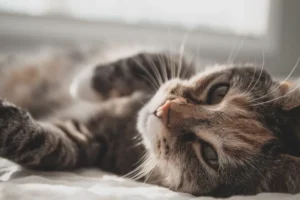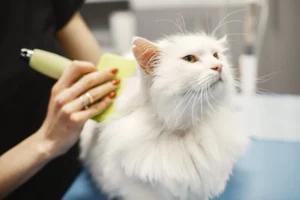Have you ever found yourself running your hand over your cat’s fur and marveled at how incredibly soft it feels? If so, you may be wondering why your feline friend’s fur is so luxuriously soft. In this blog post, we will explore the reasons behind why your cat feels extra soft and silky to the touch.
Cats, known for their grooming habits, have a natural inclination towards cleanliness. Regular grooming not only helps to keep their fur clean and free of debris but also aids in distributing natural oils produced by their skin. These oils help to keep their fur soft, smooth, and shiny, resulting in that irresistibly velvety texture you can’t resist running your fingers through.
The Role of Diet in Your Cat’s Coat
Ensuring that your feline friend has a balanced diet is crucial in maintaining that luxurious softness in their coat. Just like how our skin reflects what we eat, your cat’s fur quality is directly linked to their diet. Essential fatty acids such as omega-3 and omega-6 play a key role in keeping your cat’s coat healthy, shiny, and soft. These nutrients can be found in high-quality cat foods that are specifically formulated to promote a healthy coat.
Moreover, protein is another important component for your cat’s coat health. Protein helps in the growth and repair of your cat’s hair follicles, leading to a softer and more lustrous coat. Make sure to provide your cat with high-quality protein sources such as chicken, fish, or turkey to support their coat health.
Hydration is also vital for your cat’s skin and coat. Ensure that your cat has access to fresh water at all times to prevent dehydration, which can lead to dry, rough fur. A well-hydrated cat will have a soft and supple coat that is a pleasure to pet.
For more in-depth information on how diet affects your cat’s coat, check out this informative article from the American Association of Feline Practitioners. They provide valuable insights into the role of nutrition in maintaining your cat’s overall health, including their coat quality.
Genetics: The Secret to Soft Fur
You may have noticed that some cats seem to have inherently softer fur than others, regardless of their diet or grooming routine. This is where genetics come into play. Just like how we inherit certain physical traits from our parents, cats also inherit coat characteristics from their ancestors.
Certain cat breeds are known for their exceptionally soft fur, such as the Ragdoll or the Birman. These breeds have genetic traits that result in a plush and silky coat that is a joy to touch. If your cat belongs to one of these breeds, you can thank their genetics for their extra soft fur.
While genetics play a significant role in determining your cat’s coat texture, it’s important to remember that proper grooming and nutrition can still make a difference in enhancing the softness of your cat’s fur. By providing your cat with a balanced diet and regular grooming, you can help them maintain a soft and silky coat that will make cuddle time even more enjoyable.
Environmental Factors and Soft Fur
Have you ever wondered why your cat’s fur feels extra soft at times? Well, environmental factors play a significant role in maintaining that fluffiness. Humidity is one key factor that can affect your cat’s fur texture. When the air is dry, your cat’s fur may become static and less soft. On the other hand, optimal humidity levels can help keep your cat’s fur soft and silky. Additionally, temperature can also impact your cat’s fur. Extreme heat or cold can strip away natural oils from your cat’s skin, leading to dry and coarse fur. So, ensuring a comfortable environment with moderate humidity and temperature levels can contribute to your cat’s extra soft coat.
Regular Grooming: Key to a Soft Coat
Regular grooming is not just a luxury for your cat; it is essential for maintaining that irresistibly soft fur. Brushing your cat regularly helps distribute oils evenly throughout their fur, preventing matting and keeping it soft. Bathing your cat with a gentle shampoo designed for felines can also help remove dirt and excess oils that could make their fur feel less soft. Furthermore, trimming their nails and cleaning their ears as part of grooming can ensure your cat’s overall comfort and well-being. So, make grooming sessions a regular part of your cat care routine to keep their fur extra soft and healthy.
Additional Tip:
- Proper Nutrition: Providing your cat with a balanced diet rich in essential nutrients like omega-3 fatty acids can also contribute to the softness of their fur. Look for cat food options that support skin and coat health to enhance the softness of your furry friend’s coat.
Health and Wellness: A Reflection in Fur Texture
Have you ever marveled at how extra soft your cat’s fur feels? Well, that luxurious texture might actually be a reflection of their overall health and wellness. A healthy cat with a balanced diet, proper hydration, and good grooming habits will often have softer, shinier fur.
A diet rich in essential nutrients like omega-3 fatty acids can contribute to a soft and luscious coat. Adequate hydration is also key in maintaining skin health, which in turn affects the quality of your cat’s fur. Regular grooming not only removes dirt and knots but also stimulates the production of natural oils that keep the fur soft and glossy.
So, the next time you run your fingers through your cat’s silky fur, remember that their softness could be a sign of their excellent health and well-being.
Mythbusting: Common Misconceptions About Soft Fur
Let’s debunk some common myths surrounding the softness of your cat’s fur and shed some light on this fuzzy topic. One prevalent myth is that frequent bathing can make your cat’s fur softer. The truth is, over-bathing can strip their skin of natural oils, leading to dryness and potentially coarser fur. Instead, opt for regular grooming to maintain that softness.
Another misconception is that shaving your cat will result in softer fur when it grows back. In reality, shaving can disrupt the natural growth cycle of the fur, potentially leading to irregular texture. Embrace your cat’s natural coat length and focus on a healthy diet and grooming routine for softer fur.
Remember, the key to soft fur lies in a holistic approach to your cat’s health and well-being, not quick fixes or myths. So, prioritize their overall wellness for that irresistibly soft touch.
Bonus Tip: Providing your cat with a comfortable and stress-free environment can also impact their fur quality. Cats thrive in calm and secure spaces, so creating a peaceful atmosphere at home can contribute to their overall health and the softness of their fur.
Fun Facts About Cat Fur
Have you ever wondered why your furry feline friend feels like a fluffy cloud? Let’s uncover some exciting facts about your cat’s irresistibly soft fur!
Whisker Magic: Did you know that a cat’s whiskers are not just for show? These specialized hairs are thick, flexible, and deeply rooted in nerve endings, allowing your cat to navigate its surroundings with precision. The same genes responsible for whisker growth also contribute to the softness of your kitty’s coat.
Oil Production: Your cat’s skin contains sebaceous glands that produce natural oils to keep their fur moisturized and shiny. This oil not only adds a healthy sheen to your cat’s coat but also plays a crucial role in maintaining its softness.
Hair Structure: The structure of a cat’s fur is unique, with three layers that contribute to its soft and plush feel. The outer layer, made of long guard hairs, protects against water and dirt. The middle layer consists of fine, insulating fur, while the inner layer provides warmth and fluffiness.
Ready to dive deeper into the world of cat fur and unravel the secrets behind your pet’s luxurious coat? Let’s explore the factors that make your cat feel extra soft to the touch.
Alex, a passionate animal lover, has experience in training and understanding animal behavior. As a proud pet parent to two dogs and three cats, he founded AnimalReport.net to share insights from animal experts and expand his knowledge of the animal kingdom.




